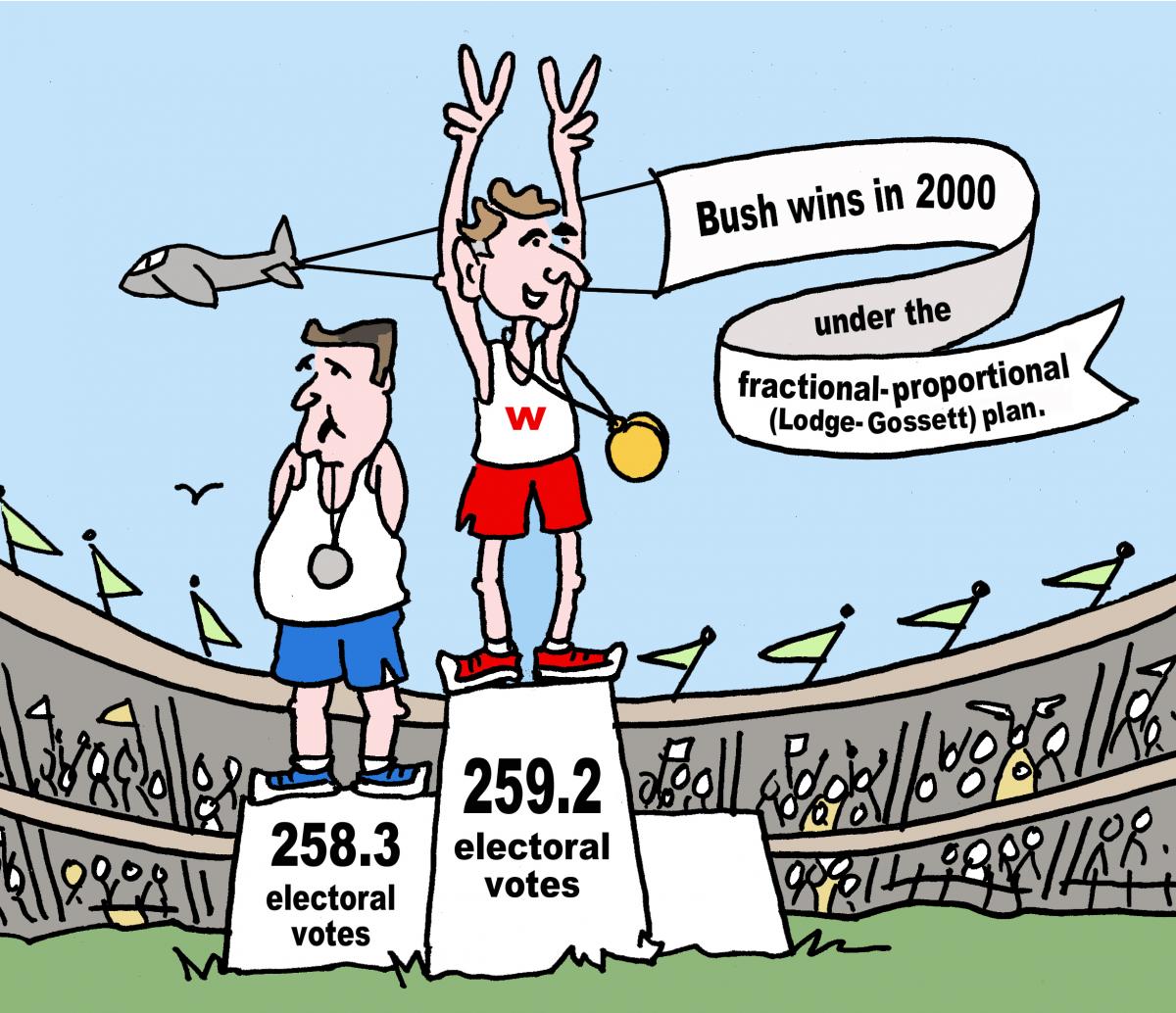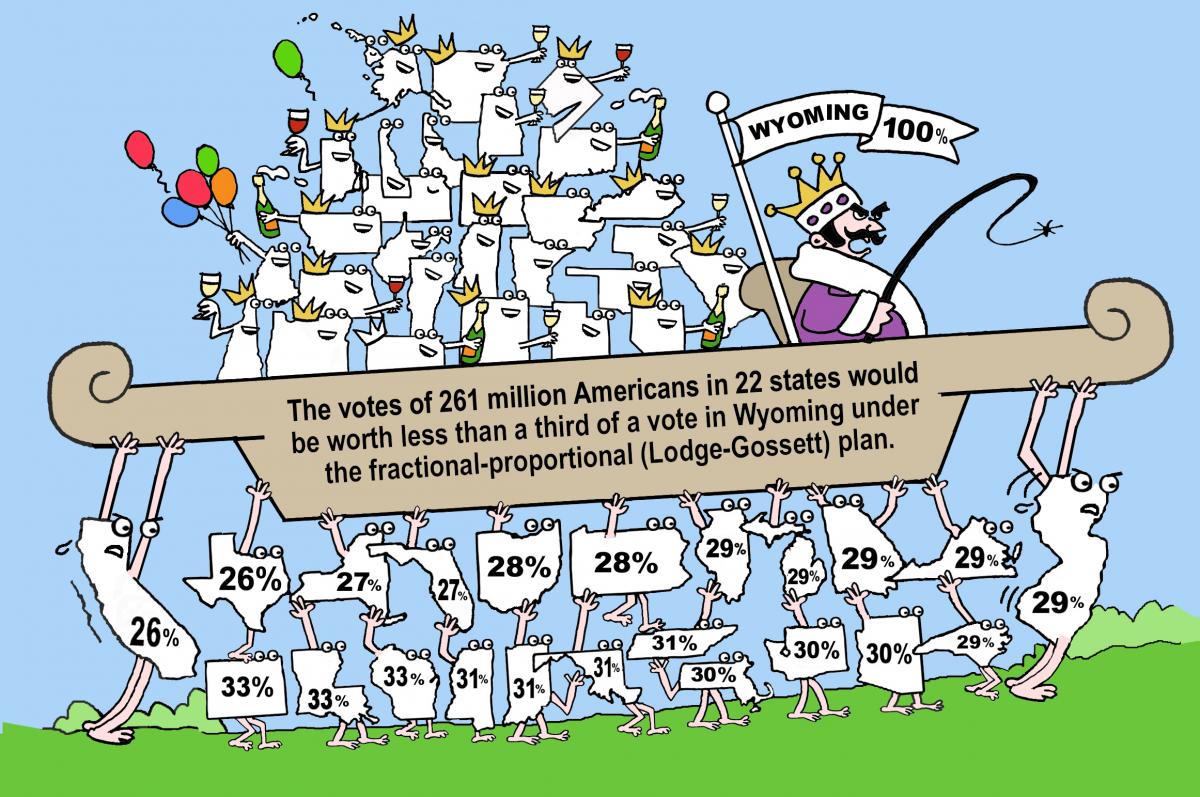Summary
Under the fractional-proportional method of awarding electoral votes, a federal constitutional amendment would be adopted to divide each state’s electoral votes proportionally according to the percentage of popular votes received in that state by each presidential candidate—with this fractional calculation carried out to three decimal places. Note that this fractional calculation is what distinguishes this method from the very different whole-number proportional method.
- Because the fractional proportional (Lodge-Gossett) method involves fractional electoral votes, a federal constitutional amendment would be required.
- The fractional proportional (Lodge-Gossett) method would not accurately reflect the national popular vote. If the fractional proportional method is applied to the 2000 election returns, George W. Bush would have been elected President. Al Gore would have received fewer electoral votes than George W. Bush—even though Gore received 537,179 more popular votes nationwide. This outcome is the consequence of the substantial built-in disparities in the value of a vote that are inherent in this method (as discussed next).

- The fractional proportional (Lodge-Gossett) method would not make every vote equal. There are four sources of inequality inherent in the fractional proportional method, and each is substantial.
- 3.81-to-one inequality because of senatorial electoral votes
- 1.75-to-1 inequality because of the imprecision in apportioning U.S. House seats (and hence electoral votes) among the states
- 1.67-to-1 inequality because of voter turnout differences at the state level
- 1.39-to-1 inequality because of population changes during the decade-long period after each census. A vote in a fast-growing state is worth less than a vote elsewhere.

- The fractional proportional (Lodge-Gossett) method would definitely improve upon the current state-by-state winner-take-all method of awarding electoral votes, which results in three out of four states and three out of four voters in the United States being ignored in the general-election campaign for President. Every voter in every state would, for all practical purposes, be politically relevant under the fractional proportional method, and candidates would therefore have reason to campaign in every state.
- In 1950, the U.S. Senate approved a federal constitutional amendment implementing the fractional proportional (Lodge-Gossett) method by a 64–27 vote, but the House defeated it.
Click here for detailed discussion.